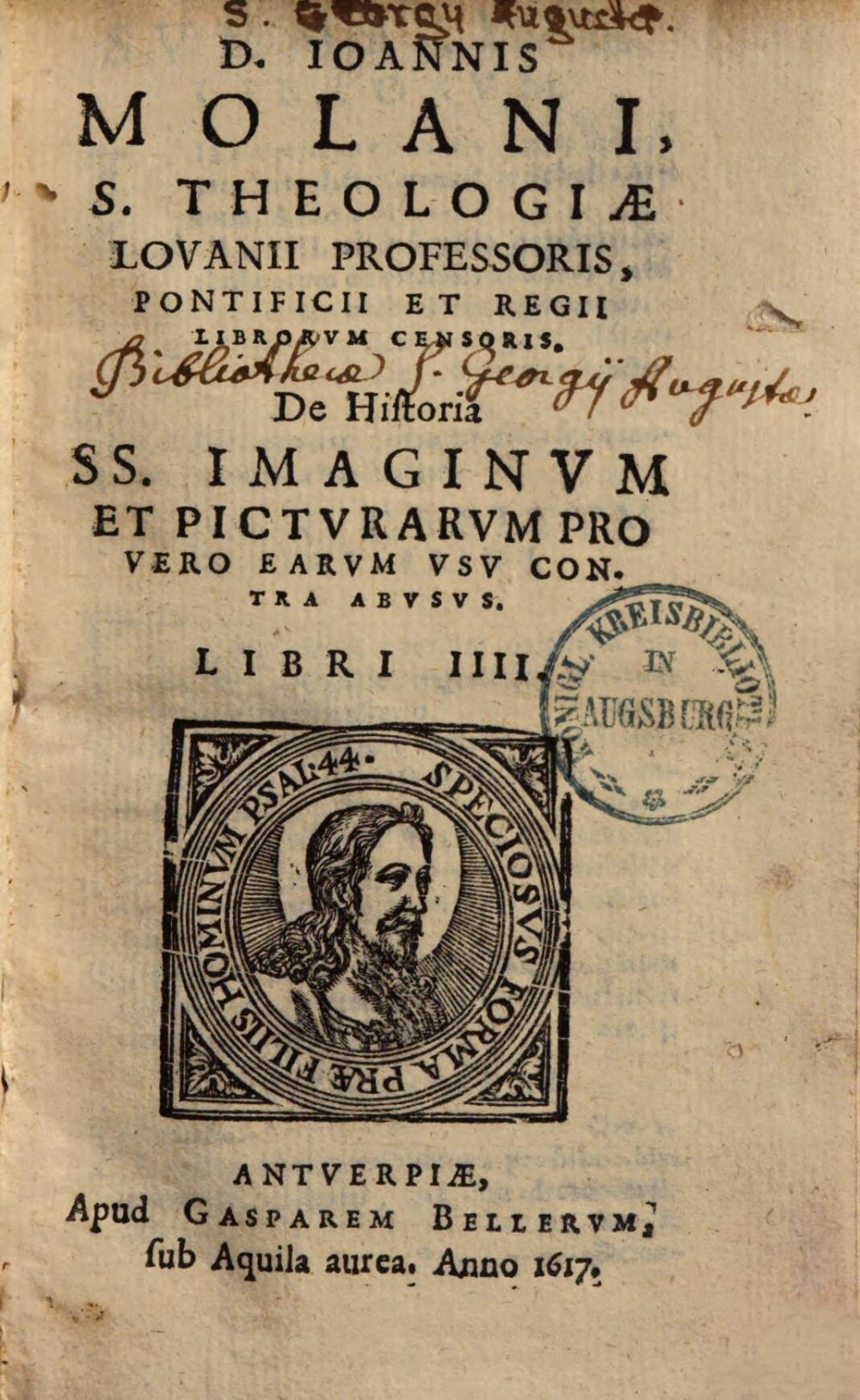
Augsburg, Staats- und Stadtbibliothek — Th H 1475. Digital Reproduction: München, Bayerische Staatsbibliothek, 2015.
In chapter 4 of book 2, Molanus deals with two rather widespread iconographies of the Holy Trinity that are disapproved by the commentators as impious and diabolical.
The first case Molanus criticises is a particular type of statue of the Virgin Mary which was relatively widespread in Northern Europe at his time. It consisted of a statue of the Virgin Mary, normally out of wood, that could be opened up. After opening the hidden inner comportment become visible, where a depiction of the Trinity could be seen. Such an image is normally referred to by the German term Schreinmadonna or the French term Vierge Ouvrante. According to Molanus, the combination of a statue of the Virgin Mary and the depiction of the Trinity creates a wrong illusion about the relationship between them since it suggests that the Trinity had taken human flesh inside the Virgin herself. This type of Madonnas are wrong both from an esthetical point of view and from a dogmatic point of view and could provoke error and lead to impiety. Another interesting aspect of this passage is the reference to Molanus’ own experience since he explicitly speaks about this type of statue of the Madonna, which he had seen himself in the monastery of Diest, Belgium.
“There are also two other images of the Trinity, but which are disapproved of by eminent men, because they do not have their source in Holy Scripture and our holy Fathers did not know them.
This is why Jean Gerson disapproves of one of them in a sermon he gave in Paris on the nativity of the Lord: ‘We must take care,’ he says, ‘that no false account is represented. I say this partly because of a particular image, which is found among the Carmelites, and others like them, who have a trinity in their bosom as if the whole Trinity had taken human flesh in the Virgin Mary. My position is that such images are devoid of beauty and religion; they may even provoke error and impiety.’ I have seen such an image in the Carthusian monastery of Diest; as far as I can remember, it was brought there from France at the time of the wars. I mention this because the examination of this image was of great help to me and could be for others, in the full understanding of the words of Gerson I have quoted.”
“Inveniuntur vero et duae aliae Trinitatis imagines, sed quae a clarissimis viris improbatae sunt, quia nec sanctis patribus nostris notae fuerunt. Unde earum unam improbat Ioannes Gerson, in sermone quem Parisiis habuit de Nativitate Domini, ‘Cavendum est’, ait, ‘ne aliqua falsa pingatur historia. Hoc dico, partim propter quandam imaginem quae est in Carmelitis et similes, quae in ventribus earum unam habent Trinitatem, veluti si tota Trinitas in Virgine Maria Carnem assumpsisset humanam, Mea sententia, nulla est in eis pulchritudo nex devotio. Et possunt esse causa erroris et indevotionis’, haec Gerson. Vidi huiusmodi imaginem in Carthusia Distensi, quem quantum memini, eo allata dicebatur ex Francia tempore belloriis. Quod ideo moneo, quia huius imaginis inspectio multum iuuit me, aliosquos; iuvate poterit, ad plene intelligendum Gersonis citata verba.”
Molanus 1996, 133-134.



